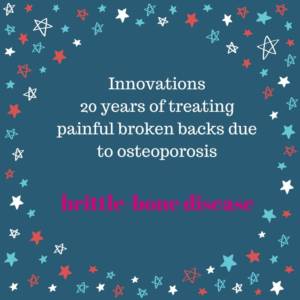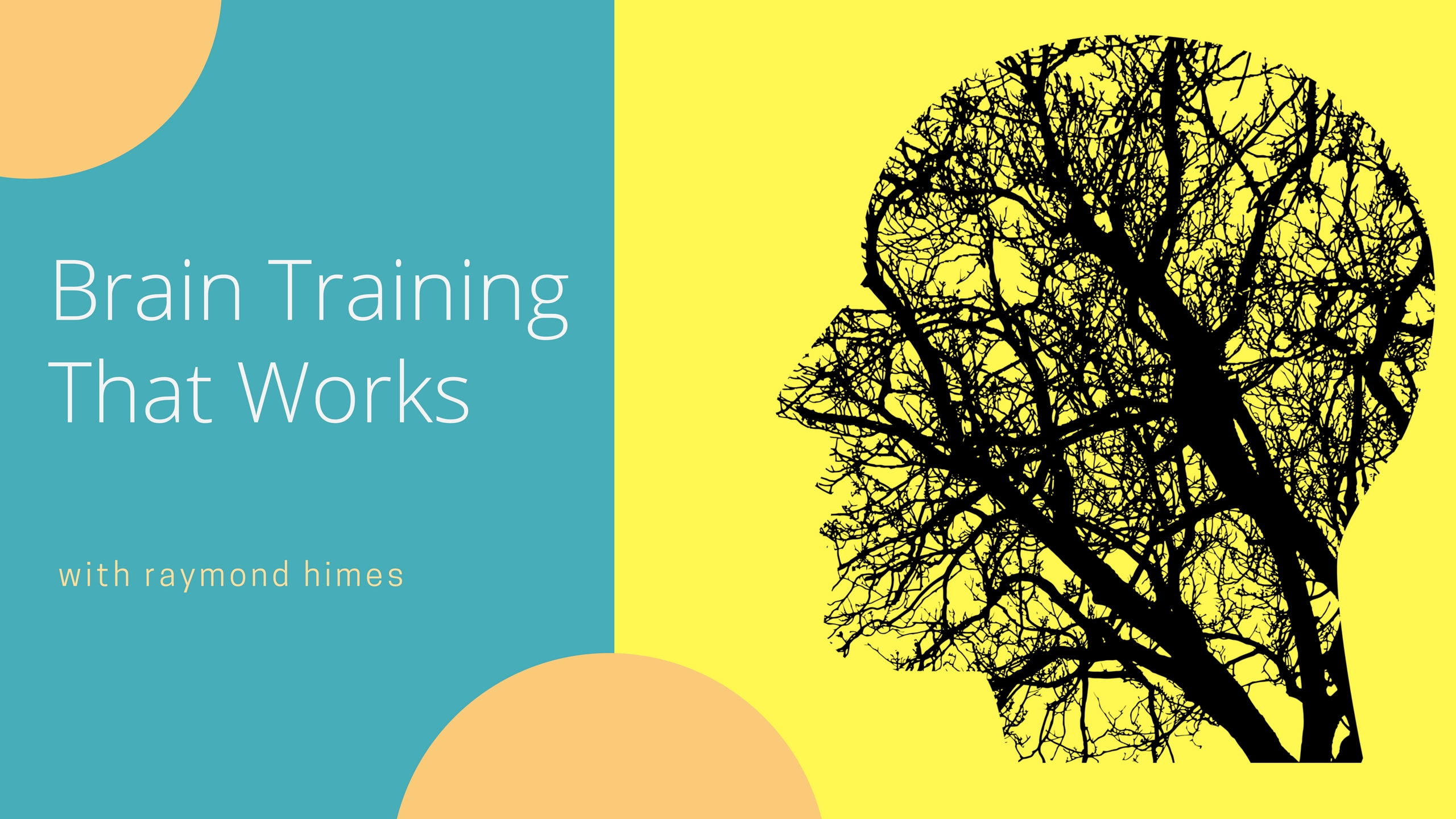Innovative Balloon Kyphoplasty 20 Years of Treating Painful Broken Backs Due to Osteoporosis
Innovative Balloon Kyphoplasty procedure celebrates 20 years of treating painfully broken backs due to osteoporosis
 Until 20 years ago, the prognosis was often bleak for the hundreds of thousands of Americans each year who suffer painful and debilitating Vertebral Compression Fractures (VCF) of the spine due to the brittle-bone disease, osteoporosis.
Until 20 years ago, the prognosis was often bleak for the hundreds of thousands of Americans each year who suffer painful and debilitating Vertebral Compression Fractures (VCF) of the spine due to the brittle-bone disease, osteoporosis.
Not only would patients experience severe pain and loss of mobility, but they also were prescribed potentially addictive opioid pain medications and sometimes faced the total loss of independence.
“In a typical scenario, you would recommend a brace to correct the kyphotic deformity, along with physical therapy and pain control, and often we would have to get social services involved,” said Dr. Van Boggus, an Orthopedic Surgeon in Toledo, Ohio, who has treated thousands of Vertebral Compression Fractures in his 30 years in practice. “If they were safely independent, and on oral pain medications, they could be discharged home. But it wasn’t uncommon for patients who lacked stability, had poor pain control or poor brace tolerance, to have to go to a skilled nursing facility.”
REVOLUTIONIZING THE PRACTICE OF MEDICINE
Today, the more than 10 million Americans with osteoporosis have another option for treating Vertebral Compression Fractures: a minimally invasive surgical procedure called Balloon Kyphoplasty. First performed in 1998, Balloon Kyphoplasty repairs and stabilizes the fracture following the orthopedic principles for treating broken bones. The outpatient procedure typically takes only about an hour. Clinical studies have found Balloon Kyphoplasty to reduce pain and improve quality of life and function. 1,2,3,4
Here’s how it works.
- The doctor inserts a thin tube through a small puncture in the skin to guide a balloon into the injured vertebral body.
- The balloon is inflated to reduce the fracture and partially restore the shape of the collapsed vertebra.
- The balloon is deflated and removed, leaving behind a cavity
- Bone cement is injected into this void to harden to form an internal cast to stabilize the fracture.
“Building a balloon able to be inflated in bone was an amazing technical achievement,” said Sam Lee, Director of Research and Development at Medtronic, who develops new products for the Balloon Kyphoplasty procedure. “Balloon catheters had been used to open blocked arteries, but never before in bone, so it took a considerable feat of engineering to do this in such a challenging mechanical environment.”
The developers of Balloon Kyphoplasty also pioneered methods for delivering bone cement to the vertebra.
“Balloon Kyphoplasty involves waiting for the bone cement to increase in viscosity, with the consistency of toothpaste, before injecting into a void created by a balloon inflation. This helps the physician control against undesirable leakage,” Lee said.
DRAMATIC RESULTS
Dr. Boggus was first introduced to Balloon Kyphoplasty by his local Medtronic consultant, Andrew Lasiter, and he trained in the procedure at Cleveland Clinic with Texas Back Institute under Dr. Isador Lieberman.
“It was a technique that I thought was dramatic in its results if you were consistent and meticulous in your evaluation of the compression fractures,” Dr. Boggus said.
He went from doing one Balloon Kyphoplasty every couple of weeks to a few every week.
“The more he did it, the more primary care and internal physicians would refer to him,” Lasiter said.
Dr. Boggus soon adopted Balloon Kyphoplasty as a key part of his practice and began educating other physicians on how to identify Vertebral Compression Fractures and refer patients for the procedure as soon as possible.
“Early on in my practice, patients would be treated with conservative care for a certain amount of time prior to being treated with a procedure.” Dr Boggus said. “However, when I started documenting that patients weren’t responding to conservative treatment, we started treating fractures sooner. We have since worked hard to educate other physicians about the distinct clinical results we have seen by treating fractures promptly with balloon kyphoplasty. “
 A recent interview with Charlene Wood, 87, a patient of Dr. Paul Dorio, Interventional Radiologist in Columbus Ohio reported an 8-of-10 on the pain scale when she sought treatment for her Vertebral Compression Fracture due to osteoporosis. A textbook case for Balloon Kyphoplasty, Wood reported a zero on the pain scale after the procedure. Now she is back to mowing her lawn and caring for her garden on the weekends which is something she has always enjoyed since her 20s.
A recent interview with Charlene Wood, 87, a patient of Dr. Paul Dorio, Interventional Radiologist in Columbus Ohio reported an 8-of-10 on the pain scale when she sought treatment for her Vertebral Compression Fracture due to osteoporosis. A textbook case for Balloon Kyphoplasty, Wood reported a zero on the pain scale after the procedure. Now she is back to mowing her lawn and caring for her garden on the weekends which is something she has always enjoyed since her 20s.
Medtronic has conducted large multicenter trials on VCFs in patients with osteoporosis and has the largest randomized controlled trial on BKP versus non-surgical care.1,2,3 “In the FREE trial, BKP provided better quality of life that was statistically and clinically significant at the primary endpoint of 1-month,” says John Tillman, PhD, Clinical Director at Medtronic, noting that the two-year results built on those findings of the FREE trial; averaged across 24 months, the differences between the two groups proved statistically significant in pain reduction as well as function, disability, and quality of life improvement for the BKP group. 1,2,3
“I want other people who have the same pain to realize how easy it can be to get it fixed,” Wood said. “Amazing, really. Just amazing.”
MORE WORK TO BE DONE
Over the course of the last 20 years, Medtronic has worked closely with physicians like Dr. Boggus to improve the Balloon Kyphoplasty procedure. The demand for therapies for Vertebral Compression Fractures is expected to grow briskly in coming years as Baby Boomers age into their 70s. A recent publication was the largest prospective clinical study ever conducted on a Medicare population to show that painful, acute VCF associated with either osteoporosis or cancer4 treated with BKP significantly reduced pain and disability, improved function, ambulatory status, self-care abilities and quality of life following the procedure4. Dr. Boggus is working with Medtronic to lead the way in educating the medical community about the availability and benefits of this procedure.
“Awareness has increased which has allowed patients to know there is a treatment for this painful condition,” says Jeff Cambra, General Manager of the Interventional Pain Therapies business within the Restorative Therapies Group at Medtronic. “And still not every sufferer of painful compression fractures gets the consideration for this treatment. To date, two-thirds of the estimated 700,000 people each year in the U.S. suffering from vertebral fractures are undiagnosed 5.”
 Dr. Boggus said more work remains to be done to educate the public and the medical community on treating Vertebral Compression Fractures with Balloon Kyphoplasty, which he called his favorite surgical procedure.
Dr. Boggus said more work remains to be done to educate the public and the medical community on treating Vertebral Compression Fractures with Balloon Kyphoplasty, which he called his favorite surgical procedure.
“There are few procedures to my knowledge where patients can experience less pain right after the surgery,” he said. “My BKP patients have felt immediate improvement after the procedure, even in the recovery room. So, consequently, I strongly advocate the procedure to my patients.”
For more information about pain management, check out the link, Improving Pain Management
BKP is a minimally invasive treatment that can repair spinal fractures caused by osteoporosis, cancer and non-cancerous tumors. Although the complication rate for Kyphon™ Balloon Kyphoplasty is low, as with most surgical procedures, serious adverse events, some of which can be fatal, can occur, including heart attack, cardiac arrest (heart stops beating), stroke, and embolism (blood, fat, or cement that migrates to the lungs or heart). Other risks include infection; leakage of bone cement into the muscle and tissue surrounding the spinal cord and nerve injury that can, in rare instances, cause paralysis; leakage of bone cement into the blood vessels resulting in damage to the blood vessels, lungs, and/or heart. Talk to your doctor about both benefits and risks of this procedure.
- Wardlaw D, Cummings SR, Van Meirhaeghe JV, et al. Efficacy and safety of balloon kyphoplasty compared with non-surgical care for vertebral compression fracture (FREE): a randomized controlled trial. Lancet. 2009 Mar 21;373(9668):1016-24
- Van Meirhaeghe JV., Bastian L., Boonen S., et al. A Randomized trial of balloon kyphoplasty and nonsurgical management for treating acute vertebral compression fractures. Spine 2013; 38(12): 971–983.
- Boonen S, Van Meirhaeghe JV, Bastian L, et al. Balloon kyphoplasty for the treatment of acute vertebral compression fractures: 2-year results from a randomized trial. J Bone Miner Res. 2011 Jul;26(7):1627-1637.
- Beall DP, Chambers MR, Thomas S, et al. Prospective and Multicenter Evaluation of Outcomes for Quality of Life and Activities of Daily Living for Balloon Kyphoplasty in the Treatment of Vertebral Compression Fractures: The EVOLVE Trial. Neurosurgery, 2018, nyy017, https://doi.org/10.1093/neuros/nyy017
- Brunton S, Carmichael B, Gold D, et al. Vertebral compression fractures in primary care recommendations from a consensus
panel. J Fam Pract. 2005;54(9):781-788.
PMD020443-1.0 I UC201809587 EN
Balloon Kyphoplasty incorporates technology developed by Gary K. Michelson, M.D.




































